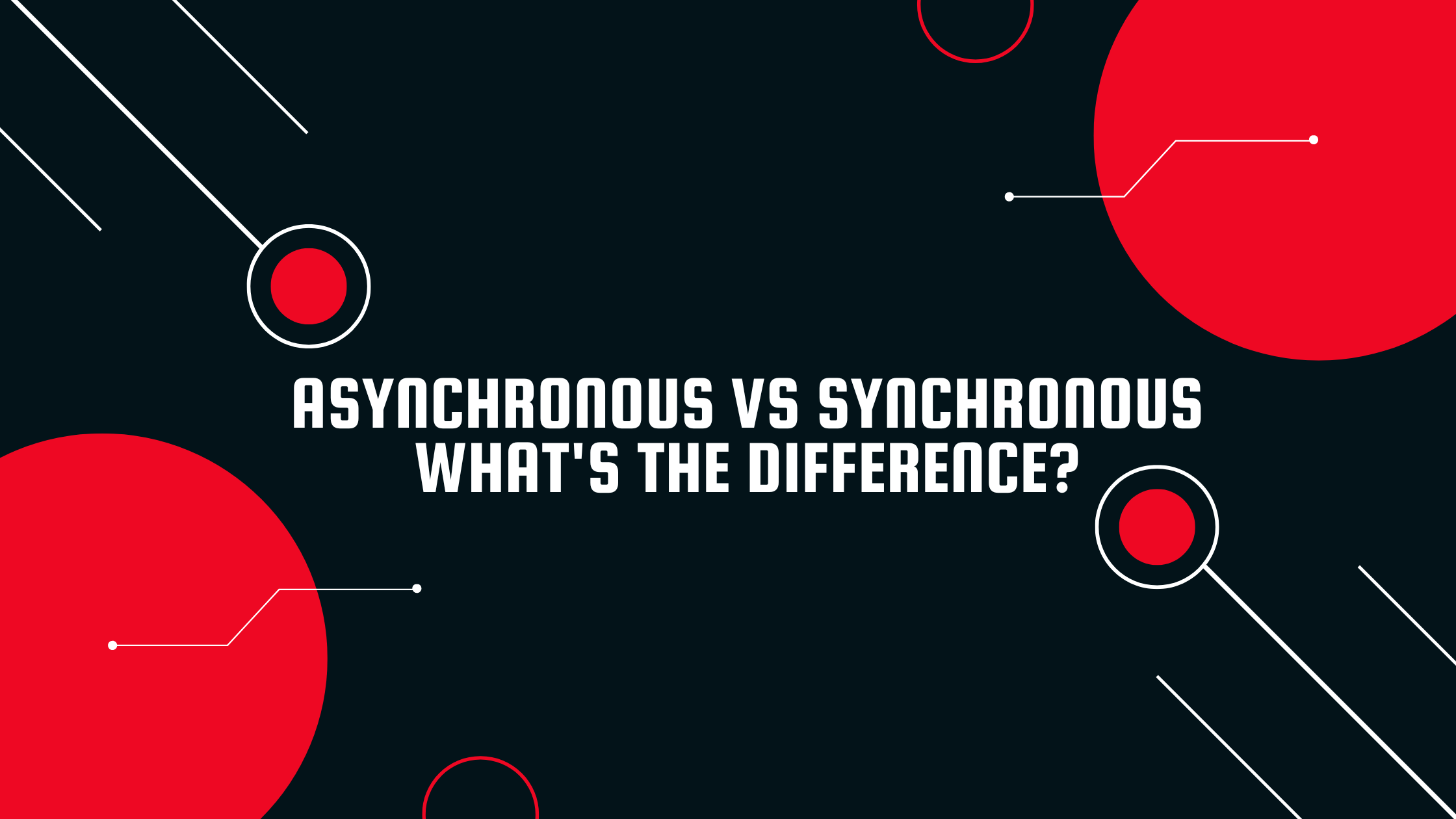In this genial age, we are becoming overwhelmed by new learning technologies. One thing unites all of these emerging technologies. They are in favor of learning on demand. You must be wondering about the asynchronous VS synchronous guide and the difference between them.
But Wait, what exactly is asynchronous programming? Additionally, how does it contrast with synchronous programming? First, let’s talk about the traditional method of synchronous learning.
Table of Contents:
Asynchronous VS Synchronous – Read the Differences

You must look to find the authentic difference between asynchronous VS synchronous. Asynchronous and synchronous are terms used in computer programming to describe the timing and coordination of tasks and events.
Synchronous programming:
Synchronous programming is a programming model where tasks or operations are executed. They all perform in a sequential and ordered manner. In this process, each task waits for the previous one to be complete before it starts. In synchronous programming, the program executes tasks in a blocking manner. It means that while a task is executing, the program is blocked. Also, it cannot execute any other tasks.
Asynchronous Programming:
Asynchronous programming is a programming model where tasks or operations are executed independently and concurrently without waiting for each other to complete. In asynchronous programming, the program executes tasks in a non-blocking manner. However, if a task is executed, the program can continue to execute other tasks in parallel.
The main benefit of asynchronous programming is that it allows for better utilization of resources. Like the model language, it can improve the overall performance of an application. This is because it allows the program to execute multiple tasks without wasting time waiting for other tasks to complete. Asynchronous programming is commonly used in web applications. The process enables the application to handle multiple requests simultaneously.
How to Choose Between Asynchronous VS Synchronous:
However, asynchronous VS synchronous programming can be more complex and harder to choose which is best as it requires more care coordination and management of tasks and events. Additionally, debugging asynchronous code can be more challenging, as the order of execution is not always predictable.
Overall, the choice between asynchronous and synchronous programming depends on the specific requirements of the application. They both depend on the trade-offs between simplicity, performance, and predictability.
Primary Reasons to Choose Asynchronous Programming
- participants can learn at their own pace and on their own terms
- , and trainers and HR managers save time and effort
- in automated tasks. These tasks include giving online classes and grading exams to cut down on repetitive work
- so employees and customers spend less time in a classroom during work hours.
Primary Reasons to Choose Synchronous Programming
- Participant-to-participant interaction
- Participants’ knowledge and experience are shared.
- Instructor feedback in real time
- The training follows a predetermined schedule
Asynchronous VS Synchronous Learning
Synchronous learning involves real-time, live instruction delivered by an instructor or facilitator. In this manner, learners and instructors interact with each other. Examples of synchronous learning include live lectures, video conferencing, webinars, and online chat sessions. In synchronous learning, learners and instructors are expected to be present and engaged at the same time.
Asynchronous learning involves self-paced instruction delivered through pre-recorded lectures, online discussion forums, and other pre-prepared materials. Also, learners can access and review at any time. In asynchronous learning, learners can work at their own pace. Also, instructors are available to provide guidance and feedback on their progress.
Both synchronous VS asynchronous learning has their advantages and disadvantages. Synchronous learning provides opportunities for real-time interaction and feedback. It can promote concentration and collaboration among learners. However, it requires learners to be available at specific times. It can be challenging for individuals with busy schedules or in different time zones.
Asynchronous VS Synchronous Communication

Both synchronous VS asynchronous communication has their advantages and disadvantages. Synchronous communication allows for real-time collaboration and immediate feedback. It can be useful for resolving issues quickly and efficiently. However, it requires both parties to be available at the same time. Also, it can be challenging, especially when dealing with people in different time zones.
Synchronous communication involves real-time communication in which the sender and the receiver are present and engaged at the same time. Examples of synchronous communication include phone calls, video conferencing, instant messaging, and live chat. In synchronous communication, the exchange of information occurs in real time, and both parties can respond to each other immediately.
Asynchronous communication, on the other hand, involves communication in which the sender and the receiver are not present at the same time. Examples of asynchronous communication include email, voicemail, text messaging, and discussion forums. In asynchronous communication, the exchange of information can occur over an extended period, with one party sending a message or request and the other party responding at a later time.
Asynchronous VS Synchronous Classes
Asynchronous classes offer greater flexibility and accessibility for students. They can access materials and complete assignments on their own time. However, they may require more self-discipline and motivation, as students need to manage their own learning schedule and progress without the immediate feedback and guidance of an instructor.
Synchronous classes provide opportunities for real-time interaction and feedback. It can facilitate engagement and collaboration among students. However, they require students to be available at specific times. But it can be challenging for individuals with busy schedules or in different time zones.
Ultimately, the choice between asynchronous VS synchronous classes depends on the specific requirements of the course and the trade-offs between immediacy and convenience. In some cases, a combination of both synchronous and asynchronous delivery methods may be used to provide students with the best learning experience.
Conclusion:
It is important to differentiate between asynchronous VS synchronous approaches in various contexts. The reason is that they have different benefits and drawbacks. Moreover, they are suitable for different situations.
In education, for example, asynchronous learning may be a good fit for students who have busy schedules or who are unable to attend live classes. It allows them to learn at their own pace and at a time that is convenient for them. Asynchronous learning also allows students to review the material multiple times if needed, which can improve retention and understanding.
On the other hand, synchronous learning may be more suitable for courses. It requires real-time interaction and collaboration among students, such as group discussions, debates, or problem-solving activities. Synchronous learning also provides an opportunity for students to receive immediate feedback and clarification from the instructor. Ultimately it can enhance the learning experience.
Read Also: Is Linux a Software and How to Use it?






